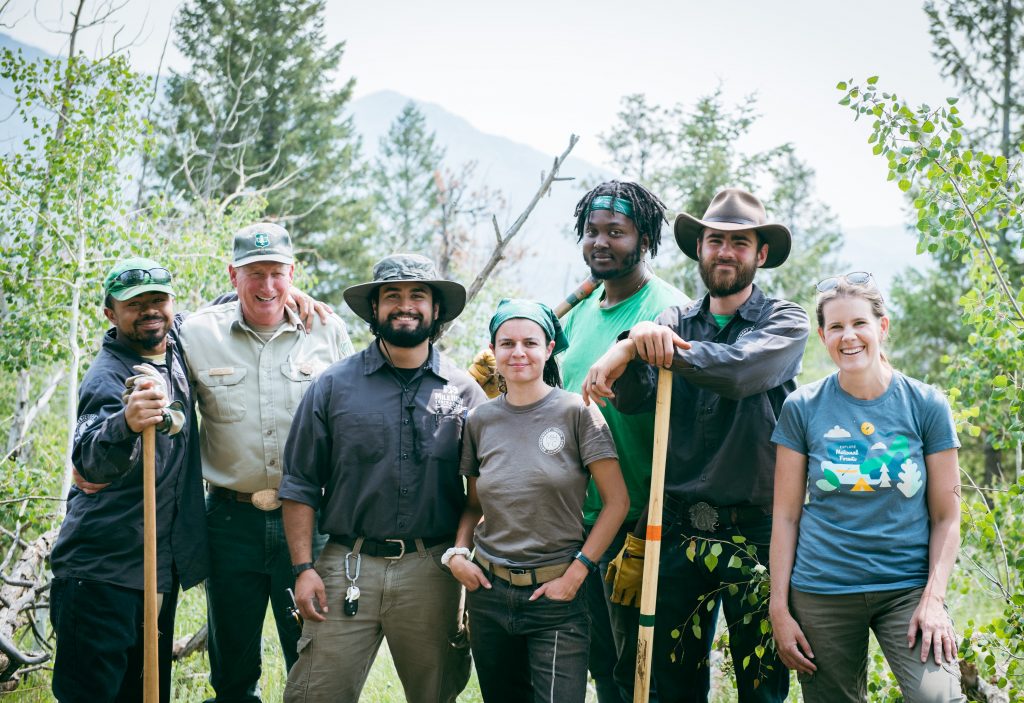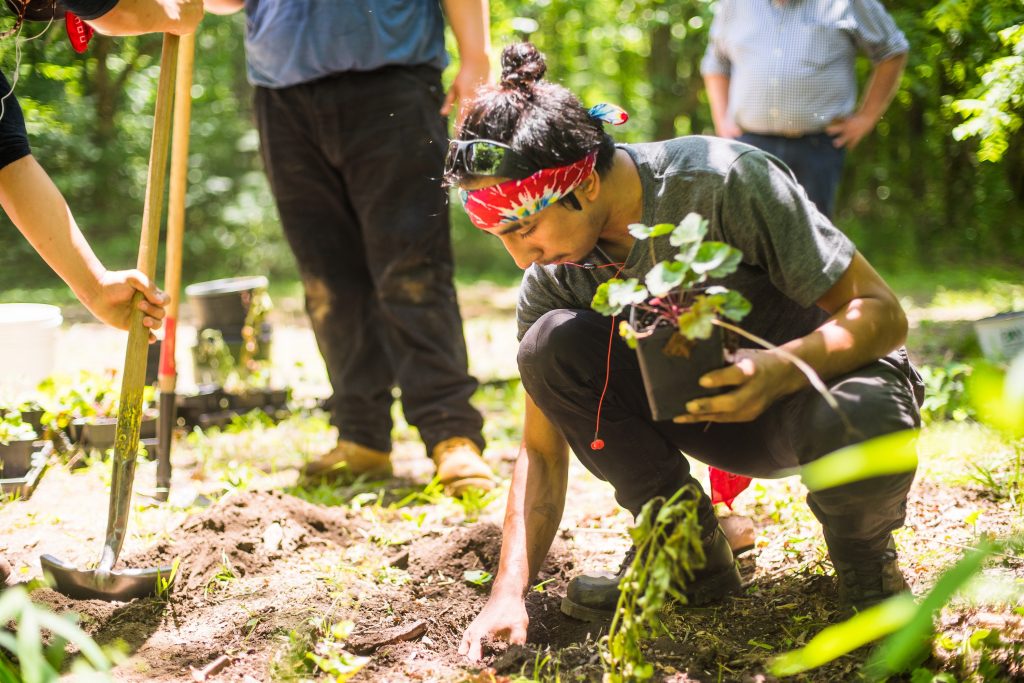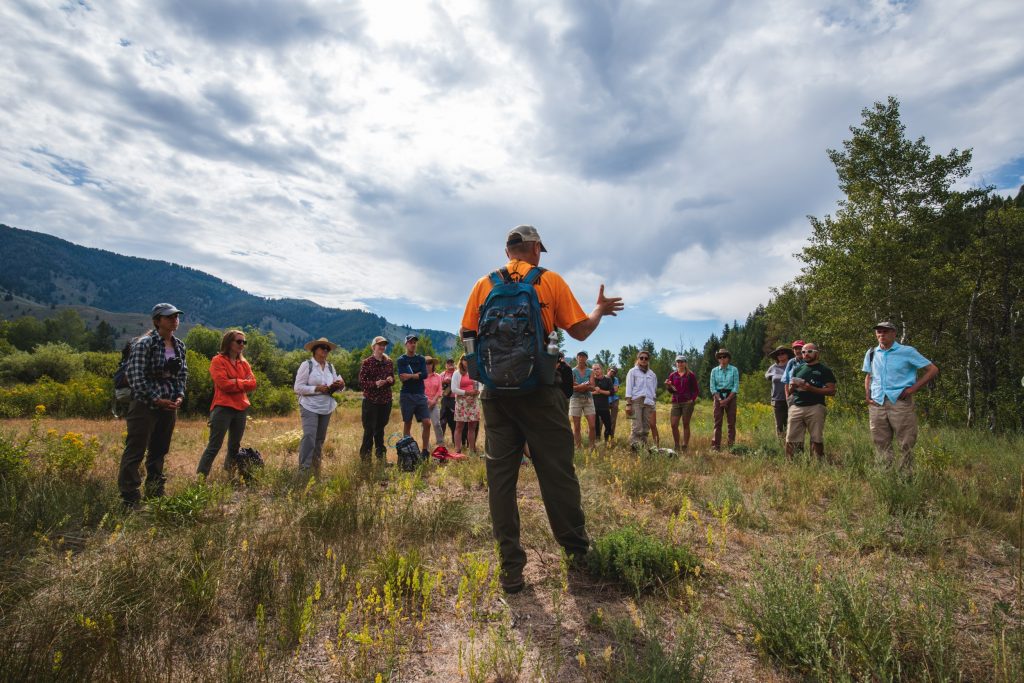Marcus Selig has urgency in his voice. That’s to be expected. He’s devoted more than 20 years to restoring forests across the U.S., and now the trees are in trouble.
Millions of national forest acres are drought-riddled and at risk for large-scale wildfires. At the nonprofit National Forest Foundation, a race is underway to make forests more resilient to climate change – and to the types of monster blazes that have devoured thousands of square miles of woodland, says Selig, the foundation’s vice president of field programs.
“We are getting the forests back on a more natural trajectory by removing some trees in places. In other places, we’re planting trees … so that Americans can continue to enjoy them into the future,” Selig says.
“If we’re not proactively managing those forests and reducing wildfire risk, the consequences aren’t good. We’re seeing fires get larger and more severe. We need to keep those forests healthy and green. With the help of Microsoft, we are working to address that,” he adds.
Based in Montana, the foundation relies on Microsoft Cloud for Nonprofit to allow employees to work from any of the 154 national forests, coordinate conservation projects and track every donated dollar, ultimately turning those gifts into on-the-ground improvements.

Members of the Front Range Trail Stewardship Strike Team in the Pike-San Isabel National Forest. (Photo by Carly Finke, courtesy of the National Forest Foundation)
At this week’s Microsoft Ignite, Microsoft announced the general availability of Microsoft Cloud for Nonprofit. Leveraging the capabilities of Microsoft 365 – Outlook, SharePoint and Teams – as well as Power Platform, Dynamics 365, Azure and LinkedIn, Microsoft Cloud for Nonprofit is tailored specifically for the nonprofit sector, reducing the time nonprofit groups spend managing overhead while helping them advance their missions.
At the National Forest Foundation – chartered by Congress in 1993 to lead forest conservation efforts – employees have long used spreadsheets to manually track their budgets, restoration investments and incoming donations. And each of the nonprofit’s regional offices traditionally maintained its own spreadsheets.
Working with its Microsoft partner threshold.world, the National Forest Foundation is unifying its data across operations from fundraising and grants to contracts and programs – all of it infused with Microsoft Cloud for Nonprofit’s services.
“Microsoft Cloud for Nonprofit allows the staff to go to one place to access all the information they need, instead of digging through files and folders,” Selig says.
“(This) gives us more time to focus on what we need to focus on – more on-the-ground work, more improvements to our national forests.”

A member of the United Keetoowah Band Youth Corps plants native plans on the Cherokee National Forest. (Photo by Mason Boring, courtesy of the National Forest Foundation)
Moving from spreadsheets, the nonprofit can gain new insights into their work, with staff able to make decisions that drive their teams’ workflows.
“The benefits National Forest Foundation is seeing demonstrate our own mission as part of Microsoft Philanthropies,” says Justin Spelhaug, vice president of Microsoft Tech for Social Impact, which helps nonprofit groups access Microsoft cloud technologies. “Our approach is a business model that is oriented around social good, delivering innovative and relevant solutions so that nonprofits around the globe can do more to scale their missions.”
The foundation’s supporters also will see additional transparency. Microsoft Cloud for Nonprofit enables the organization to keep donors apprised of the programs and projects they’re backing financially, showing them how their dollars are being spent. This will free up time and provide the foundation more flexibility to focus its fundraising efforts on the most immediate program needs.
And when it comes to the organization’s forest-saving work, “there is so much at stake,” says Mary Mitsos, the foundation’s president and CEO.
“Forests give us so much. They provide clean air. They provide clean water. They have habitat for tons of species that are important for our life in general. Green space anywhere is so important for the health and mental well-being of people,” Mitsos says.

Community members learn more about aspen restoration in the Sawtooth National Forest. (Photo by One Apparatus Photography, courtesy of the National Forest Foundation)
Over the past 28 years, the foundation has restored or maintained nearly 300,000 acres of wildlife habitat and has surveyed or restored more than 5,600 miles of rivers and streams. All that has been accomplished with a dedicated volunteer base of nearly 200,000 people, resulting in 2.8 million hours of volunteer work. In fact, workers have planted more than 20 million trees, improved more than 25,000 miles of trails and reduced wildfire fuels on about 1.5 million acres. There’s more to come.
“In the next couple years,” Mitsos says, “with the help from these Microsoft fundraising, volunteer, and program impact solutions, we’re going to triple our impact.”
To learn more about Microsoft Cloud for Nonprofit, visit Microsoft.com/Nonprofits and join us December 7 for the “Microsoft Cloud for Nonprofit: New tools to accelerate your mission” digital event.

